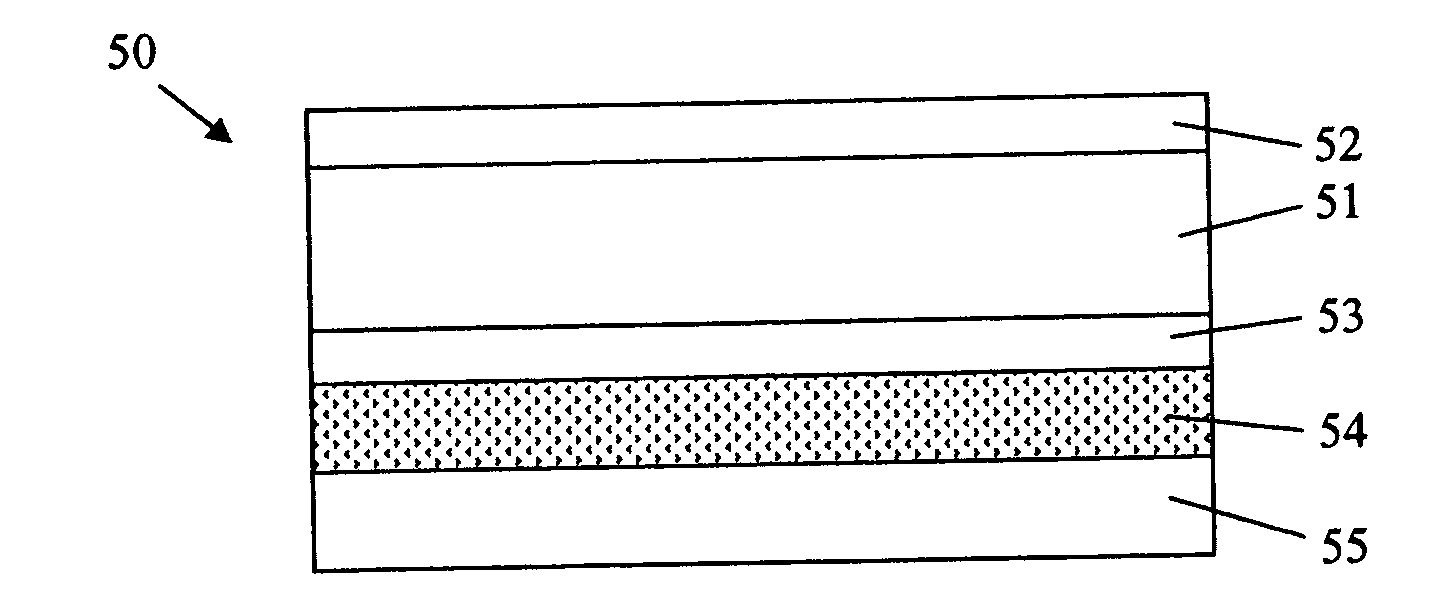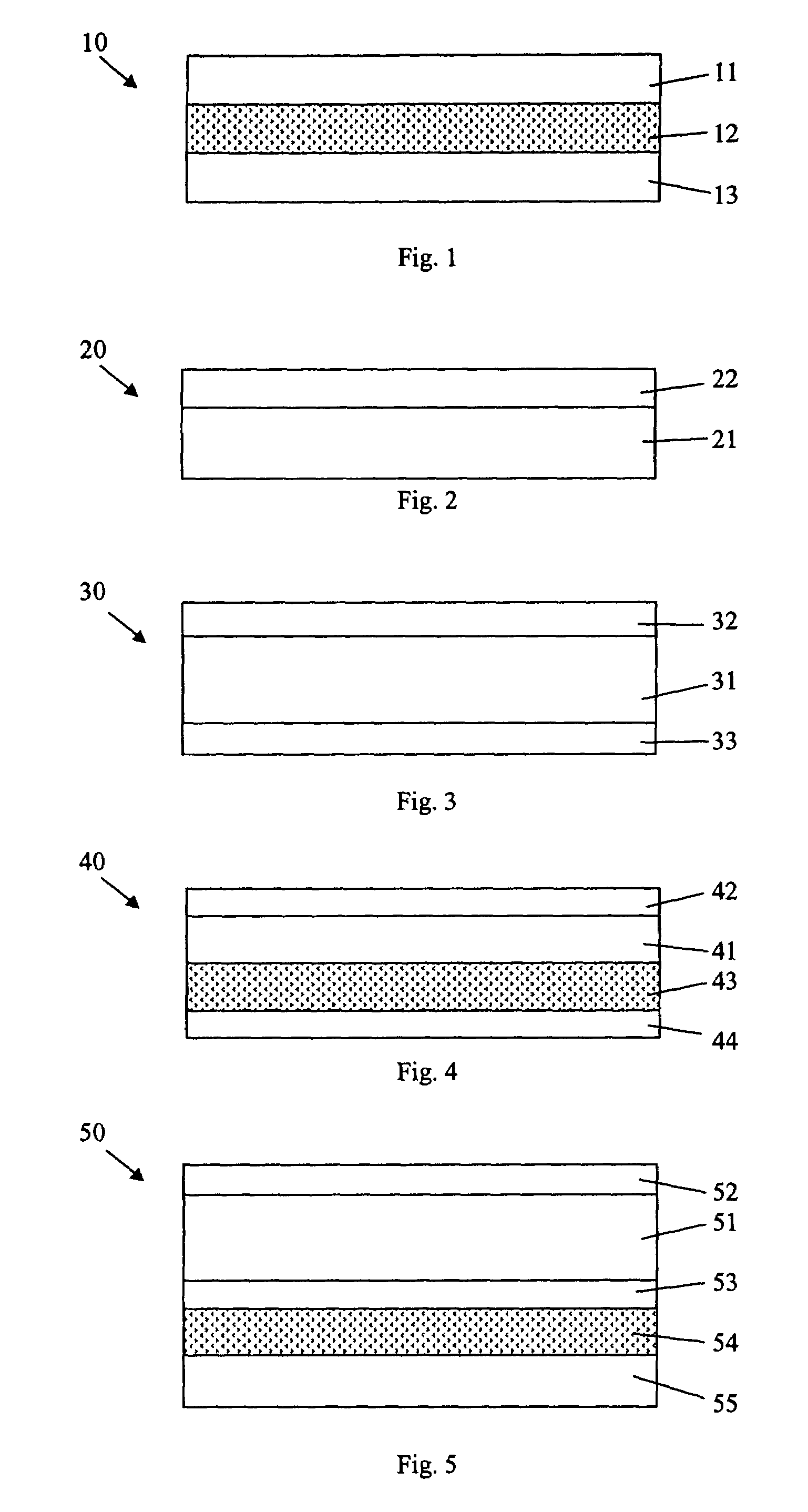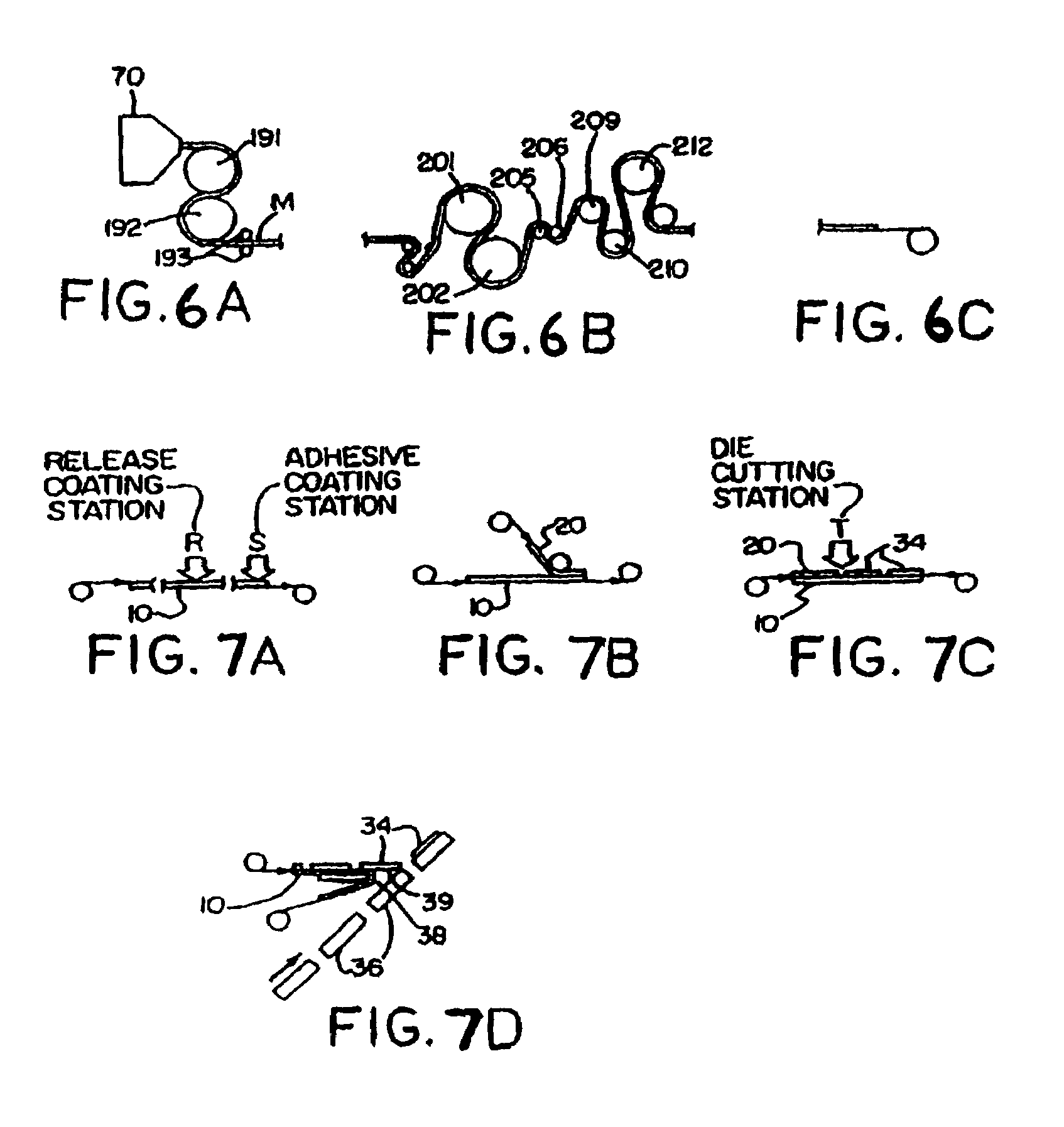Machine direction oriented polymeric films and methods of making the same
a polymer film, machine direction technology, applied in the direction of film/foil adhesives, identification means, instruments, etc., can solve the problems of inability to dispense labels in a reliable commercially acceptable manner using automatic machinery, reduce stiffness, and achieve low haze and good stiffness. , the effect of good clarity
- Summary
- Abstract
- Description
- Claims
- Application Information
AI Technical Summary
Benefits of technology
Problems solved by technology
Method used
Image
Examples
Embodiment Construction
[0025]The films of the present invention are derived from a combination of (A) at least one propylene homopolymer, propylene copolymer or blend of two or more thereof and (B) at least one olefin elastomer, provided that (A) and (B) are not the same. The films may be used as a monolayer film or as one or more parts of a multilayer film. In one embodiment, the films are clear, even crystal clear. In one embodiment, the films have a haze of less than 10%. Haze is measured in the BYK Gardner hazemeter. The oriented propylene films of the present invention have an opacity of about 10% or less.
[0026]The present invention relates to films prepared from propylene polymers. The films are prepared from (A) at least one propylene homopolymer, propylene copolymer or blend of two or more thereof, wherein (A) has a melt flow rate from about 5 to about 40, or from about 6 to about 32, or from about 6 to about 30, or from about 8 to about 25. The melt flow rate is determined b...
PUM
| Property | Measurement | Unit |
|---|---|---|
| melt flow rate | aaaaa | aaaaa |
| density | aaaaa | aaaaa |
| melt flow rate | aaaaa | aaaaa |
Abstract
Description
Claims
Application Information
 Login to View More
Login to View More - R&D
- Intellectual Property
- Life Sciences
- Materials
- Tech Scout
- Unparalleled Data Quality
- Higher Quality Content
- 60% Fewer Hallucinations
Browse by: Latest US Patents, China's latest patents, Technical Efficacy Thesaurus, Application Domain, Technology Topic, Popular Technical Reports.
© 2025 PatSnap. All rights reserved.Legal|Privacy policy|Modern Slavery Act Transparency Statement|Sitemap|About US| Contact US: help@patsnap.com



